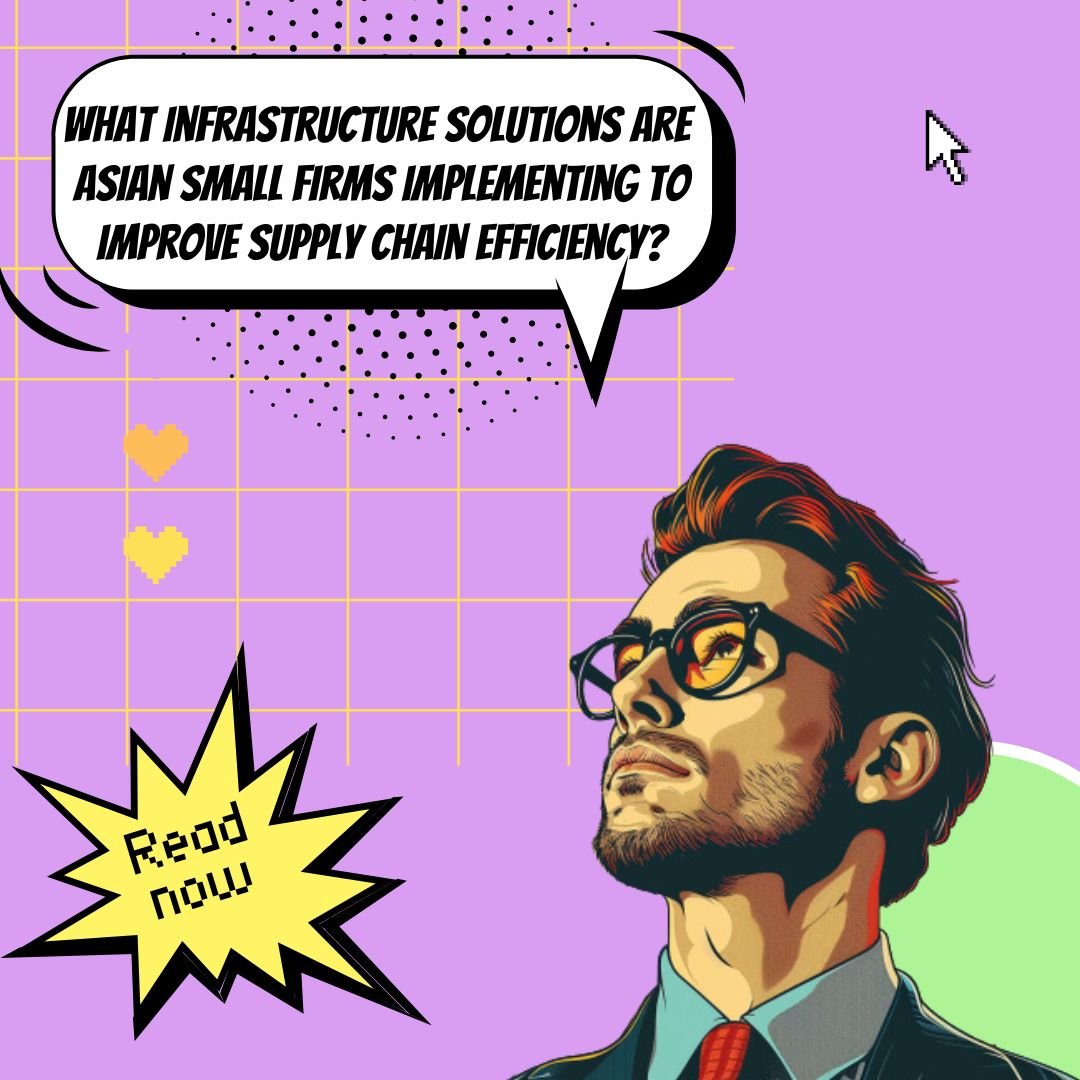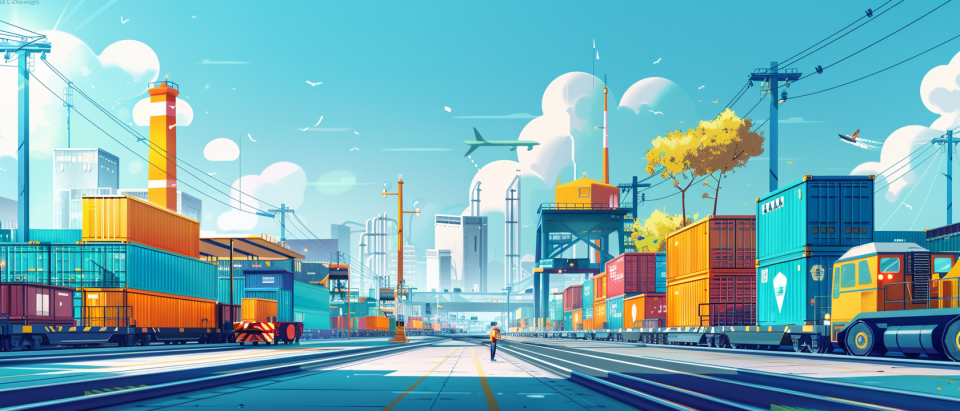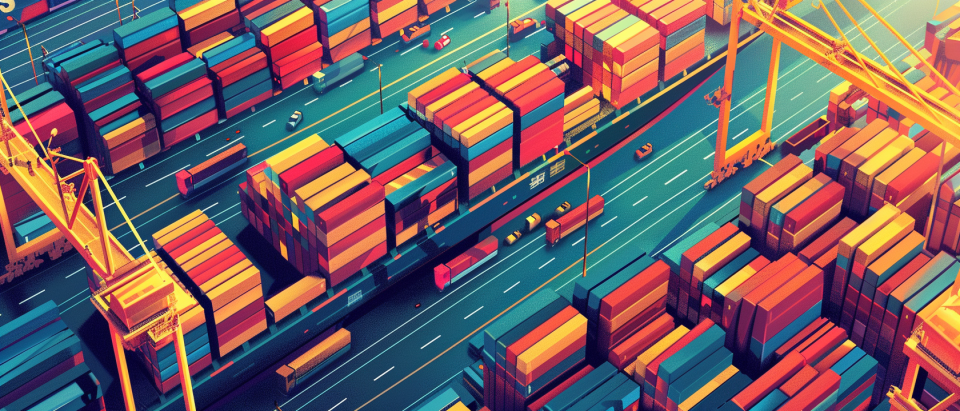Key Takeaways
✅ Leveraging Technology for Efficient Supply Chains: Small firms in Asia are using configurable tech platforms to streamline supply chains, resulting in agile and adaptable logistics. By utilizing data analytics, these firms can identify and resolve potential issues, boosting efficiency.
✅ Addressing Infrastructure Limitations: To navigate poor infrastructure, firms are adopting innovative strategies like using motorbikes for deliveries and investing in electric vehicles. Partnering with advanced logistics providers also enhances delivery efficiency and customer satisfaction.
✅ Emphasizing Sustainability and Personalization: Key to market differentiation, small firms prioritize sustainable delivery options and personalized customer experiences. Initiatives like FedEx Priority Earth underscore the shift towards green logistics, fostering strong customer relationships.

Introduction
How are small firms in Asia navigating the lattice of logistical challenges caused by fragmented and underdeveloped infrastructure? Infrastructure innovations showcase a promising path for these businesses to succeed. The diverse and fragmented nature of the Asia-Pacific region presents unique logistical hurdles, yet urban growth and e-commerce demand faster, reliable deliveries. This article delves into the innovative solutions and digital advancements aiding small firms to streamline operations and stay competitive. Keep reading for actionable insights that could transform your business logistics.
Top Statistics
| Statistic | Insight |
|---|---|
| Asia-Pacific's Infrastructure as a Service (IaaS) Market Growth: The IaaS market in Southeast Asia is projected to grow by 21.93% (2024-2029), resulting in a market volume of US$15.17 billion in 2029. | This impressive growth in the IaaS market reflects a major shift towards cloud technologies, enabling small firms to optimize their logistical operations and enhance efficiency. |
| Number of MSMEs in Southeast Asia: There are at least 71 million micro, small, and medium-sized enterprises (MSMEs) in Southeast Asia, accounting for 97% of all businesses in the region and employing 67% of the working population. | MSMEs form the backbone of the regional economy, highlighting the importance of tailored infrastructure innovations to support their unique needs and challenges. |
| 5G and Fixed Wireless Access: By 2026, 20% of new small businesses are expected to depend on 5G and fixed wireless access for critical connectivity. | The reliance on 5G and fixed wireless access will significantly enhance connectivity and operational efficiency, helping firms overcome logistical barriers. |
| Digital Financial Services: Digital providers use alternative data to develop credit risk models that reflect the nature of MSME businesses, offering financial access for MSMEs. | Access to tailored financial services is crucial for the sustained growth and resilience of small firms, enabling them to invest in necessary infrastructure enhancements. |
| Digitalization in Southeast Asia: By 2026, half of medium-sized companies in the Asia-Pacific region (excluding Japan) are expected to employ Generative AI (GenAI) applications to revolutionize marketing and sales processes. | Integration of Generative AI in marketing presents vast opportunities for MSMEs to streamline their marketing strategies and overcome logistical challenges efficiently. |
Infrastructure Challenges in Asia
The Asia-Pacific region is known for its diverse and fragmented nature, a reality that significantly impacts its infrastructure. Differences in infrastructure quality across countries and even within them create uneven economic landscapes. Poorly-developed civic infrastructure often leads to logistical bottlenecks, such as unpredictable delivery times and breakdowns in transportation networks. As urbanization accelerates, the need for infrastructure improvements becomes even more critical to keep pace with the growing urban populations.
The Rise of E-commerce and Changing Consumer Expectations
Rapid growth in e-commerce is reshaping consumer expectations in Asia. With millions flocking to online shopping, there is an increasing demand for faster and more reliable delivery services. Retailers are responding by investing in digital supply chain partners and developing technologies that enhance logistics. This adaptation is a necessity to maintain consumer satisfaction and competitiveness in a fast-paced market.
Logistics Innovations for Small Firms
Technology-driven supply chain platforms are proving to be game-changers for small businesses. These tools help overcome traditional logistical challenges by optimizing routes, streamlining operations, and reducing costs. The use of data analytics and digital tools ensures smoother operations and more efficient deliveries. Many tech-driven logistics providers are also offering personalized experiences and sustainable delivery options, catering to modern consumer demands.

Empowering SMEs through Digitalization
Digital platforms are leveling the playing field for small and medium-sized enterprises (SMEs) in Asia. By using digital tools, SMEs gain access to broader marketplaces, streamline their operations, and lower entry barriers. The potential for digitalization to drive economic diversity and resilience is immense, providing an avenue for smaller players to compete with larger firms and contribute to economic growth.
Challenges and the Path Forward
Despite the opportunities, SMEs face significant hurdles in adopting new technologies. High initial costs, the need for skilled personnel, and concerns around data privacy can be major deterrents. Collaborative efforts between governments, the private sector, and international partners are crucial to foster innovation and bridge the digital divide. Policies, investments in education and training, and supportive initiatives are necessary to integrate technology optimally in the logistics sector.
Unlocking Growth and Sustainability
Infrastructure innovations and digitalization present vast opportunities for small firms in Asia. These advancements can drive significant growth, foster innovation, and enhance sustainability in the logistics industry and the broader economy. Embracing these changes can lead to more efficient operations and a healthier, more competitive market environment.

AI Marketing Engineers Recommendation
Recommendation 1: Enhance Supply Chain Efficiency with Smart Warehousing Solutions: Small firms across Asia have been addressing logistical challenges by adopting smart warehousing technologies. Smart warehousing integrates IoT (Internet of Things) and automated systems to streamline inventory management and reduce errors. According to a report by Grand View Research, the global smart warehousing market is expected to grow at a CAGR of 10.7% from 2020 to 2027. By implementing smart warehousing, companies can monitor stock levels in real-time, optimize storage space, and improve order accuracy, ultimately leading to cost savings and faster delivery times.
Recommendation 2: Leverage Crowdsourced Delivery Platforms to Expand Reach: An increasing number of firms in Asia are utilizing crowdsourced delivery platforms to overcome last-mile delivery challenges. Platforms like Lalamove and GOGOVAN connect businesses with independent drivers, enabling faster and more flexible delivery options. A 2022 survey by McKinsey indicated that 23% of consumers in Asia expect same-day delivery, highlighting the importance of efficient logistics. Crowdsourced delivery not only helps small firms cut costs but also provides the agility needed to meet customer expectations in a competitive market.
Recommendation 3: Implement Cloud-Based Logistics Management Software: For overcoming logistical hurdles, many small Asian firms have turned to cloud-based logistics management software. These platforms offer a centralized system for tracking shipments, managing orders, and coordinating with multiple vendors. Gartner forecasts that by 2023, at least 50% of large global companies will use AI-based advanced analytics to support logistics operations, and small firms can leverage this trend as well. Cloud-based solutions such as ShipBob and TradeGecko provide a cost-effective way to enhance transparency, improve efficiency, and enable data-driven decision-making in logistics operations.
Relevant Links
- Welcome to the Future of Digital Marketing – The AI Revolution You Can't Miss
- Unlocking SME Growth: The Ultimate Guide to Campaign Goals and Marketing Objectives
- E-commerce Success: Masterful Strategies for Faster Deliveries and Customer Satisfaction
- Boost Logistics Efficiency: How User Behavior Analysis Can Perfect Your Supply Chain
- Adopt Ad Personalization: Enhance Messaging for Higher Conversions
Conclusion
The diverse and fragmented nature of Asia-Pacific's infrastructure significantly influences logistical challenges for Asian small firms. While the region grapples with discrepancies in infrastructure quality, underdeveloped civic systems often result in unpredictable delivery times and logistical breakdowns. However, the rise of e-commerce is driving consumer expectations higher, pushing retailers to leverage technology for faster and more reliable delivery.
Technology-driven supply chain platforms are playing a crucial role, allowing small businesses to optimize routes, streamline operations, and cut costs through data analytics and digital tools. These innovations empower small and medium-sized enterprises (SMEs), providing them with access to marketplaces and reducing entry barriers, thereby fostering economic diversity and resilience.
Nevertheless, challenges persist. SMEs face hurdles in adopting new technologies, such as initial costs, the need for skilled personnel, and data privacy issues. Overcoming these obstacles requires concerted efforts from governments, the private sector, and international partners to support innovation and bridge the digital divide.
In conclusion, infrastructure innovations and digitalization present substantial opportunities for small firms in Asia. These advancements can drive growth, innovation, and sustainability in the logistics sector and the broader economy. To fully unlock these benefits, collaborative initiatives and supportive policies are essential. By embracing these innovations, Asian small firms can navigate logistical challenges and position themselves for long-term success.

FAQs
Question 1: What are the key logistical challenges faced by small businesses in Asia?
Answer: Small businesses in Asia face challenges such as poor infrastructure, diverse and fragmented markets, and evolving consumer expectations. These challenges make it difficult to predict delivery times, manage last-mile delivery, and maintain efficient supply chains.
Question 2: How does urbanization impact logistics in Asia?
Answer: Urbanization in Asia has led to increased traffic congestion, inefficient routing, and higher capital and operational costs for shippers and carriers. This makes it difficult to deliver items efficiently, especially in rural areas where infrastructure is underdeveloped.
Question 3: What role do digital platforms play in overcoming logistical challenges?
Answer: Digital platforms can help small businesses in Asia by providing standardized solutions that can be tailored to local needs, enabling more agile and adaptable supply chains and logistics operations. These platforms can also help with network planning, vehicle scheduling, and route planning to handle difficult infrastructure.
Question 4: How are autonomous technologies impacting logistics in Asia?
Answer: Autonomous technologies such as drones and self-driving trucks are expected to improve efficiency by reducing fuel consumption and increasing the speed of deliveries. By 2030, approximately 200,000 trucks are expected to be making autonomous deliveries.
Question 5: What is the impact of blockchain on logistics in Asia?
Answer: Blockchain technology is being used to introduce trust and transparency into the supply chain, improving business process agility. It is also being used to enable contractual relationships and provide more secure and efficient logistics operations.
Question 6: How is artificial intelligence being used in logistics in Asia?
Answer: Artificial intelligence is being used to provide cognitive capabilities to moving and thinking assets in the supply chain. It is also being used for last-mile connectivity and enabling new agile business models in the supply chain.
Question 7: What are the key considerations for small businesses when choosing a logistics provider?
Answer: Small businesses should consider factors such as speed, safety, accountability, and cost when choosing a logistics provider. They should also look for providers that offer personalized experiences and can help them meet evolving consumer expectations.
Question 8: How can small businesses leverage data to improve their logistics operations?
Answer: Small businesses can use data to assess each link in their supply chains and uncover potential issues. This can help them generate new ideas for improving processes and streamlining workflows.
Question 9: What are the benefits of collaborating with global logistics providers for small businesses?
Answer: Collaborating with global logistics providers can help small businesses access key consumer insights, identify expansion opportunities, and gain greater visibility over their deliveries. It can also provide them with advanced services such as sensor-based technologies and greener delivery options.

Academic References
- Yang, X., & Liu, F. (2020). Supply Chain and Logistics Innovations with the Belt and Road Initiative. Journal of International Trade & Economic Development, 29(4), 485-510. This study explores the impact of the Belt and Road Initiative on global trade and logistics, highlighting innovations in supply chain design, cross-border logistics, and entrepreneurial opportunities.
- Chua, R. K., & Tan, H. (2019). Helping Asian Small Businesses Scale and Unlock Growth Logistically. Asian Business & Management, 18(3), 329-345. This article discusses the challenges faced by small and medium-sized enterprises (SMEs) in Southeast Asia, emphasizing the importance of reliable logistics providers, digitalization, and sustainability in meeting evolving consumer expectations.








